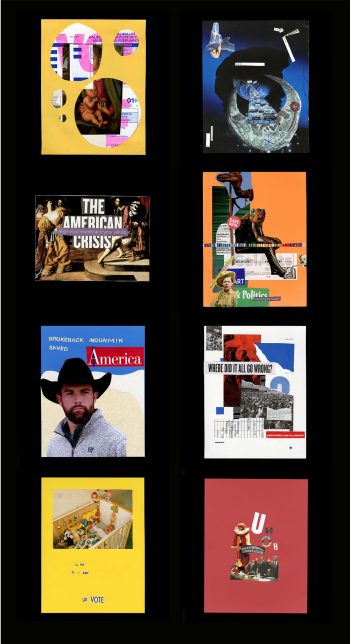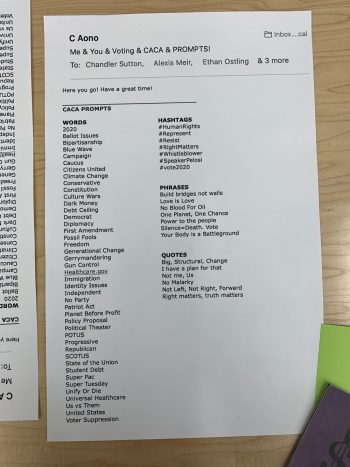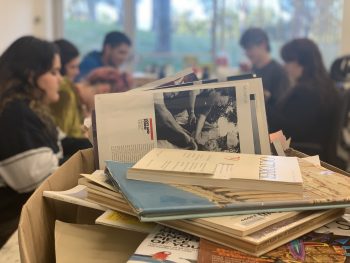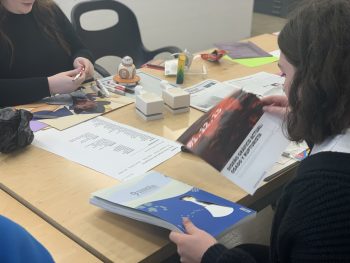CalArts Graphic Design program has always been doing something fun (making posters, conducting events, etc) along with the change of political climate. The CACA gathering on February 7th was a little special. Getting closer to the date of 2020 US Presidential Election, CACA decided to shed a light on the importance of exercising the right to vote. Our faculty Caryn Aono, shared some prompts on February 7th for the CACA members. With these prompts in mind, the members started to collect materials from the magazines and they created really good pieces of collage works with the theme politics. Here are some of the Photos of Feb 7th and the collages made during that day.
Also, here’s an interview with Jessica Peng (BFA4), one of the members of CACA X Politics event.
1.)What is CACA, and your role within it?
CACA is the CalArts Collage Association, and despite countless attempts to change the name, it seems as though CACA is the only name that will stick. I think, as graphic designers in the digital age, we all get a little too attached to our computers and lose touch with our capabilities to make with our hands, even though that’s how most of us got started. CACA counters that by forcing designers to work with their hands and their eyes and improvise a little.
I heard about CACA my first year, but there were no meetings because students are always too busy to run it. Last year I took it upon myself to bring it back fully, creating an instagram account to bring it into the new social media age, and create a system where (hopefully) CACA will continue being run. Now that I’ve officially handed CACA off to Chandler Sutton, I just go to meetings, make collages, and make sure that CACA keeps going from afar.
2.)What was the goal of CACA x Vote?
Caryn & Louise came to me with their Me & You & Voting, Too initiative, and we were trying to figure out a way to get students together to make political posters or some sort of political PSA. I proposed that we could have a voting themed CACA meeting, where students make collages based off of political issues they care about, or promoted voting, in general. It could be a fun way to spread the message in a fast, cheap, and effective way, since CACA is essentially the only out of class graphic design activity that gets students in our program together.
3.)How does CACA fit in with the school’s political climate?
It’s fascinating to think of CACA as political, when in reality I think it was created for the exact opposite reason. Students wanted a break from making work that needs to mean all the time, and CACA gives them an opportunity to make collages that are fun and simply nonsensical.
However, I think despite everything being a little bit nonsensical, collages are always a reflection of the environment the collage maker lives in. Because the work is all found material, it’s a direct reflection of what kind of world the work lives in and what the creator is feeling. And since we are all currently living in a highly politicized state, and lots of designers in the program have things to say about the world we live in, it makes sense for CACA to create a safe space for designers to both make light of political issues, as well as spread an informative message about those issues.
4.)What to you is the designer’s role in artistic political efforts?
I don’t know if there’s any requirement or role for a designer in political efforts. I think it’s bigger than that. Like, do you, as an individual, care about the world you live in and the people around you? Or, do you like the way things are going? Designers are lucky that our skill is in communication, so it seems as though we have a lot of influence in these things, but I would ask the same things to a doctor or a lawyer. If they care about the political climate, then they should use whatever skill or platform to try and make the world a better place. It’s everyone’s social responsibility, not just artists’ and designers’.





